Myrtle rust
Myrtle rust is a serious fungal disease that affects plants in the Myrtaceae family. It infects many native species like bottle brush, tea tree and eucalyptus.
If you see or suspect myrtle rust, please report it to Biosecurity Queensland by calling 13 25 23. Myrtle rust is a new disease to Australia, although we cannot eradicate it, you can help us stop the spread.
How to identify myrtle rust
To identify myrtle rust, look for masses of powdery bright yellow or orange-yellow spores on infected plants. It is mostly found in wet and humid conditions.
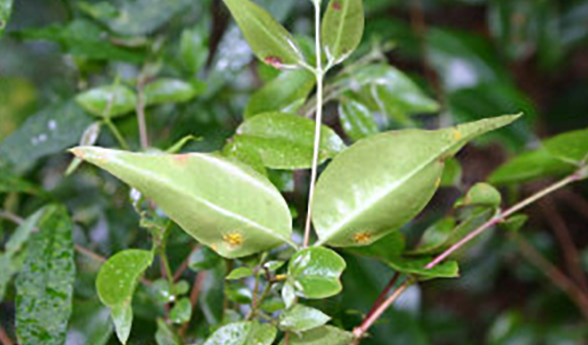
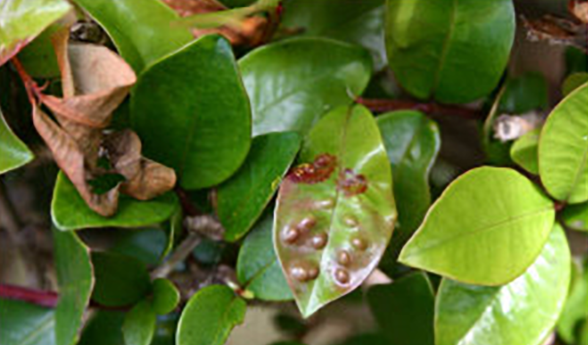
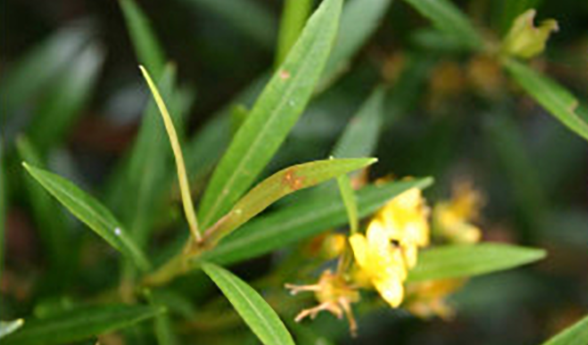
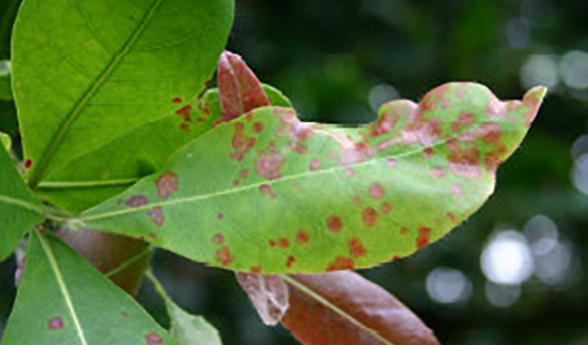
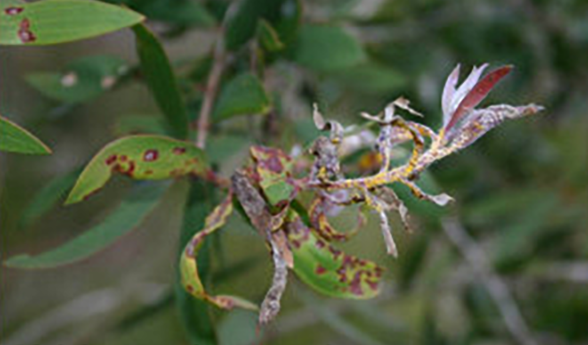

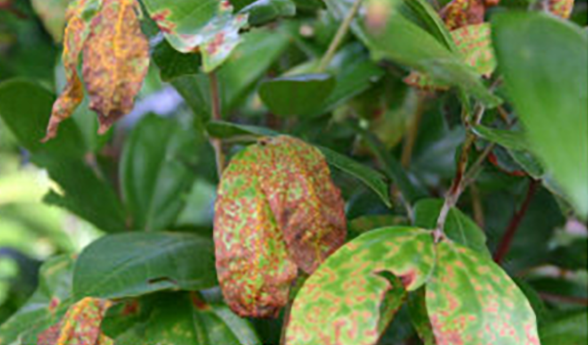
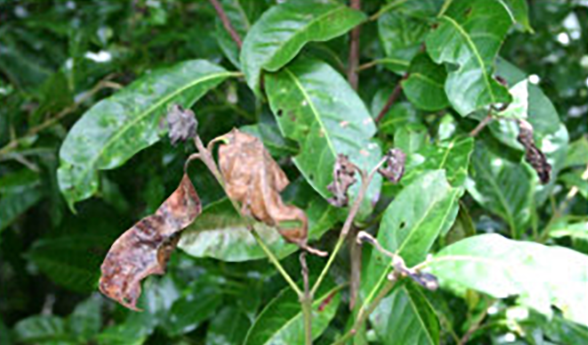
How does myrtle rust spread?
The myrtle rust fungus produces thousands of spores which are highly mobile. These spores spread rapidly through wind, human activity and animals. Common ways include:
- movement of infected or contaminated plant material
- animals such as bees, birds, bats and possums
- contaminated plant waste, timber and wood packaging
- contaminated equipment and tools used on or around plants
- contaminated clothing and shoes.
Rust pustules can mature to release spores in as little as 10 to 12 days. Spores can survive for up to three months in the environment.
Planting strategies and recommendations
Small-scale revegetation
To reduce myrtle rust when planting a few trees:
- Choose plants that are relatively tolerant or only moderately susceptible.
- Avoid plants that are highly susceptible or extremely susceptible.
Large-scale revegetation
To reduce myrtle rust when planting many trees:
- Choose plants that are relatively tolerant or only moderately susceptible.
- If you wish to plants that are highly susceptible or extremely susceptible
- plant them few and far between
- buffer them from wind with relatively tolerant plants
- space out plants to reduce humidity, no specific distance is recommended.
Help stop the spread
If you see or suspect myrtle rust, please report it to Biosecurity Queensland by calling 13 25 23.
We do not yet know the full host range of myrtle rust. With your help, we can stop its spread, manage impacts and carry out research to seek long-term solutions.
Are my plants tolerant or susceptible to myrtle rust?
Relatively tolerant
- Acmena hemilampra (syn. Syzygium hemilamprum) - Blush satinash
- Acmenaingens - Red apple
- Asteromyrtus brassii - Brass's Asteromyrtus
- Austromyrtus tenuifolia - Narrow leaf myrtle
- Backhousia angustifolia - Curry myrtle or narrow-leaved myrtle
- Backhousia oligantha (endangered) - No common name
- Backhousia sciadophora - Shatterwood
- Backhousia sp. 'Prince Regent' - No common name
- Choricarpia subargentea (near threatened) - Giant ironwood
- Corymbia henryi - Large leaved spotted gum
- Corymbia torelliana - Cadagi
- Corymbia citriodora subsp. variegata - Spotted gum
- Eucalyptus sp. - Red gum
- Eucalyptus cloeziana - Gympie messmate
- Eucalyptus planchoniana - Bastard tallow wood
- Eucalyptustereticornis - Blue gum, forest red gum
- Gossia bidwillii (syn. Austromyrtus bidwillii) - Scrub python tree
- Gossia floribunda - Cape ironwood
- Gossia myrsinocarpa - Malanada ironwood, small flowered lignum
- Lenwebbia lasioclada - Velvet myrtle
- Lenwebbia sp. 'Blackall Range' (endangered) - Blackall Range myrtle
- Leptospermum liversidgei - Blackall Range myrtle
- Leptospermum petersonii - Lemon-scented tea tree
- Leptospermum semibaccatum - No common name
Moderately susceptible
- Acmenosperma claviflorum - Grey satinash
- Backhousia myrtifolia - Grey myrtle, ironwood
- Eucalyptus carnea - Broad-leaved white mahogany
- Eucalyptus curtisii - Plunkett mallee
- Eucalyptus grandis - Flooded gum, rose gum
- Eucalyptus tindaliae - Tindale's stringybark
- Eugenia zeyheri - No common name
- Gossia fragrantissima (endangered) - Sweet myrtle
- Gossia macilwraithensis (near threatened) - No common name
- Gossia punctata - Dotted myrtle
- Leptospermum luehmannii - Lemon-scented tea tree, olive tea tree
- Melaleuca saligna - Willow bottlebrush, white bottlebrush
- Melaleuca viminalis (syn. Callistemon viminalis) - Willow bottlebrush
- Rhodamnia arenaria - Cape York malletwood
- Rhodamnia argentea - Silver myrtle or malletwood
- Rhodamnia glabrescens (near threatened) - Smooth malletwood
- Rhodamnia pauciovulata (near threatened) - Small-leaved malletwood
- Rhodamnia spongiosa (syn. R. glauca) - Northern malletwood
- Rhodomyrtus canescens - Crater ironwood
- Rhodomyrtus pervagata - Rusty rhodomyrtus, rusty ironwood
- Rhodomyrtus sericea - Grey rhodomyrtus
- Rhodomyrtus trineura subsp. capensis - No common name
- Sphaerantia discolor - Tully Penda
- Syzygium angophoroides - Yarrabah satinash
- Syzygium cumini - Java plum
- Syzygium eucalyptoides subsp. eucalyptoides - White apple
- Syzygium xerampelinum - Mulgrave satinash
- Waterhousea Unipunctata - Rolypoly satinash
- Xanthostemon youngii - Crimson penda
Highly susceptible
- Anetholea anisata (syn. Backhousia anisata, Syzygium anisatum) - Aniseed myrtle
- Austromyrtus dulcis - Midgen berry or midyim
- Backhousia citriodora - Lemon-scented myrtle
- Choricarpia leptopetala - Brown myrtle, rusty turpentine
- Gossia acmenoides - Scrub ironwood
- Gossia gonoclada (endangered) - Angle-stemmed myrtle
- Gossia hillii - Scaly myrtle
- Lenwebbia prominens (near threatened) - Southern velvet myrtle
- Melaleuca fluviatilis - Weeping tea tree
- Melalecua leucadendra - Broad-leaved paperbark
- Melaleuca nodosa - Prickly-leaved paperbark
- Melaleuca polandii - No common name
- Melaleuca viridiflora - Broad-leaved paperbark
- Rhodamnia costata - Malletwood
- Rhodamnia dumicola - Rib-fruited malletwood
- Rhodamnia sessiliflora - Iron malletwood
- Rhodomyrtus psidioides - Native guava
- Rhodomyrtus tomentosa - Downy rose myrtle, Ceylon hill gooseberry
- Syzygium oleosum - Blue lillypilly
- Tristania neriifolia - Water gum
- Xanthostemon oppositifolius (vulnerable) - Southern penda
Extremely susceptible
- Agonis flexuosa - Willow myrtle
- Chamelaucium uncinatum - Geraldton wax
- Eugenia reinwardtiana - Beach cherry
- Gossia inophloia (syn. Austromyrtus inophloia) (near threatened) - Thready barked myrtle
- Melaleuca quinquenervia - Broad-leaved paperbark
- Rhodamnia angustifolia (endangered) - Narrow-leaved malletwood
- Rhodamnia maideniana - Smooth scrub turpentine
- Rhodamnia rubescens - Scrub turpentine
- Syzygium jambos - Rose apple